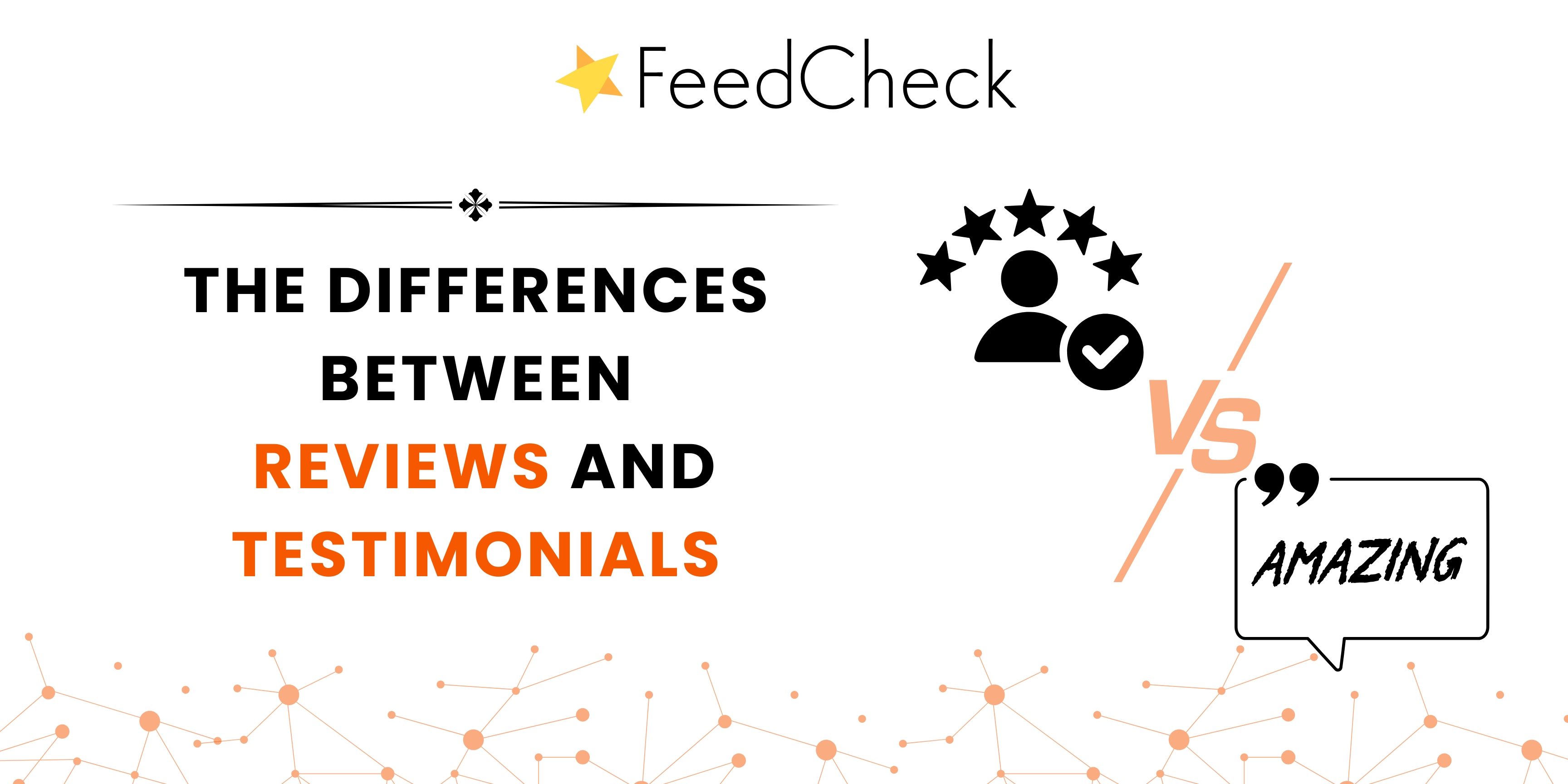In the world of customer feedback, the words ‘reviews’ and ‘testimonials’ are often thrown around interchangeably. And, on the surface, that makes sense. In a way, they both reflect the customer’s experience. They both act as social proof, giving you insights into what people think about your brand.
But while they may seem similar, reviews and testimonials serve very different purposes. They’re not just two sides of the same coin. In fact, understanding the difference between them, and knowing how to use each strategically, can significantly impact your online reputation, marketing effectiveness, and even customer acquisition.
Testimonials
According to Collins English Dictionary, a testimonial is ‘a statement testifying to a person’s qualifications, characters, etc., or to the merits of some product, service, etc’. It’s often an expression of appreciation or recommendation, intentionally given to highlight something positive.
HubSpot, the leading customer platform, defines it as an authentic endorsement from someone who has used the product or service and has had a positive experience, or success as a result of that product or service.
In much simpler terms, a testimonial is a carefully shared story coming from a satisfied customer who publicly acknowledges the quality of your work, your service, or your brand. You often see testimonials on company websites, landing pages, or in case studies – places where businesses are trying to build trust and convert visitors into customers.
And for good reason – testimonials tap into social proof, the idea that people mirror the actions and preferences of others when making decisions. If someone sees that others before them have had a positive experience, they’re more likely to trust the brand and want the same outcome for themselves.
According to BigCommerce, 88% of customers trust testimonials and reviews as much as personal recommendations from friends and family. And that’s exactly why companies actively request testimonials – to help build that front of trust and customer satisfaction.

Reviews
Now, let’s talk about reviews.
The Collins English Dictionary describes a review as ‘a general survey or account, a retrospective view or survey as of past events or experiences’. HubSpot simplifies this by saying reviews are written reflections of the customer’s experience with the company.
In other words, reviews are organic. They come from the customer’s own initiative and can be found across the internet’s many online feedback platforms, from Google and Yelp, to Amazon and Walmart, to countless other niche platforms.
Unlike testimonials, brands can’t edit reviews and shape the narrative in their favor. This makes reviews a powerful source of feedback – they’re raw, unfiltered, and honest.
BrightLocal’s 2024 consumer survey revealed that 67% of consumers are likely to leave a positive review, while 40% are willing to post one after a negative experience. That makes reviews a more accurate reflection of the full spectrum of customer sentiment.
Most reviews are short and direct, with some platforms often including a star-rating system to help summarize the sentiment, making it easier to see at a glance. While positive reviews are often brief, negative reviews may go into detail, outlining the exact issues a customer faced – whether that’s pricing, staff behavior, broken features, or others.
Key differences between reviews and testimonials
Now that we’ve defined both, let’s talk about how reviews and testimonials differ in three essential ways: platform, control, and context.
- Platform matters. Testimonials typically appear on brand’s own platforms: website, product pages, sales materials, and marketing content. They’re carefully placed to promote success stories and show the brand can deliver quality work for future clients. Meanwhile, reviews show up on third-party platforms, and they’re often visible right in the search results. These reviews are part of your online reputation and can quickly influence how others view your brand.
- Control is key. Testimonials are curated. You choose which clients to feature, what they say, and where their message is shown. That’s why they’re always so positive and on-brand. Contrastingly, you have no control over reviews. Anyone can post anything, at any time, anywhere. You can’t edit or delete bad reviews, but you can respond to them, helping your online brand reputation.
- Context differs. Testimonials are longer and more detailed. They often tell a story, include a quote, and highlight what specific benefits someone received. Reviews can be good or bad, but they’re usually more spontaneous and emotion-driven. They reflect what someone thinks in the moment – making them more authentic, but sometimes a bit brutal.

What to do with reviews and testimonials?
Both reviews and testimonials are powerful, but they serve different roles in your brand strategy.
Use reviews for insight. More honest and direct, customer reviews offer valuable, real-time data on how your business is performing. Through review analysis, you can identify recurring themes and common pain points, what locations or products need more support, or what’s working well.
With the right tools, reviews can reveal insights you wouldn’t see otherwise, improving operations and boosting your reputation across the map.
FeedCheck is designed to help you do exactly that. Our platform brings all your reviews together in one place. We use smart sentiment analysis to highlight trends, show you where each location stands, and help your team act quickly. With FeedCheck, review monitoring becomes proactive, not reactive.
Testimonials, on the other hand, are much better suited for marketing. These curated stories are the gold standard for building trust on your website, social media, email campaigns, and sales funnels. They give prospective clients a reason to believe your brand will deliver, based on real customer experience.
Highlight testimonials in case studies and share them on social media. Use them on the homepage or other relevant landing pages. But make sure they’re believable, with names, jobs, titles, to add credibility.
Conclusion
Understanding the difference between reviews and testimonials isn’t just about semantics, it’s about using the right type of feedback in the right way.
Testimonials are curated proof of success. They tell potential customers that your brand has delivered quality in the past, and it definitely will again.
Reviews are organic and authentic snapshots of the real customer experience. They give you the tools to build trust, manage reputation, and gather insights that fuel long-term growth.
Both are reflections of customer experience, and both become essential forms of social proof. But when used together, they create a 360-view of your brand’s reputation.
FeedCheck helps brands monitor, analyze, and act on customer reviews across platforms and locations, all from one easy-to-use dashboard. And we make it easy to feature your best customer stories front and center.If you’re looking to turn feedback into insights to use for growth, look no further. FeedCheck can do it for you. Schedule a call with us and let’s see how we can support you.
